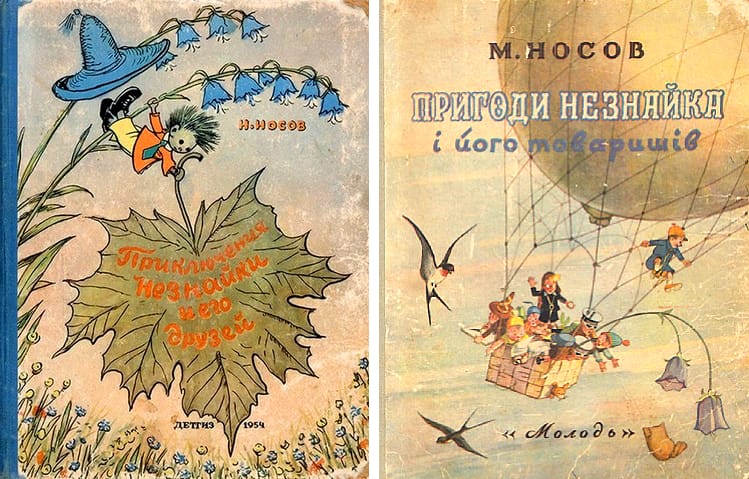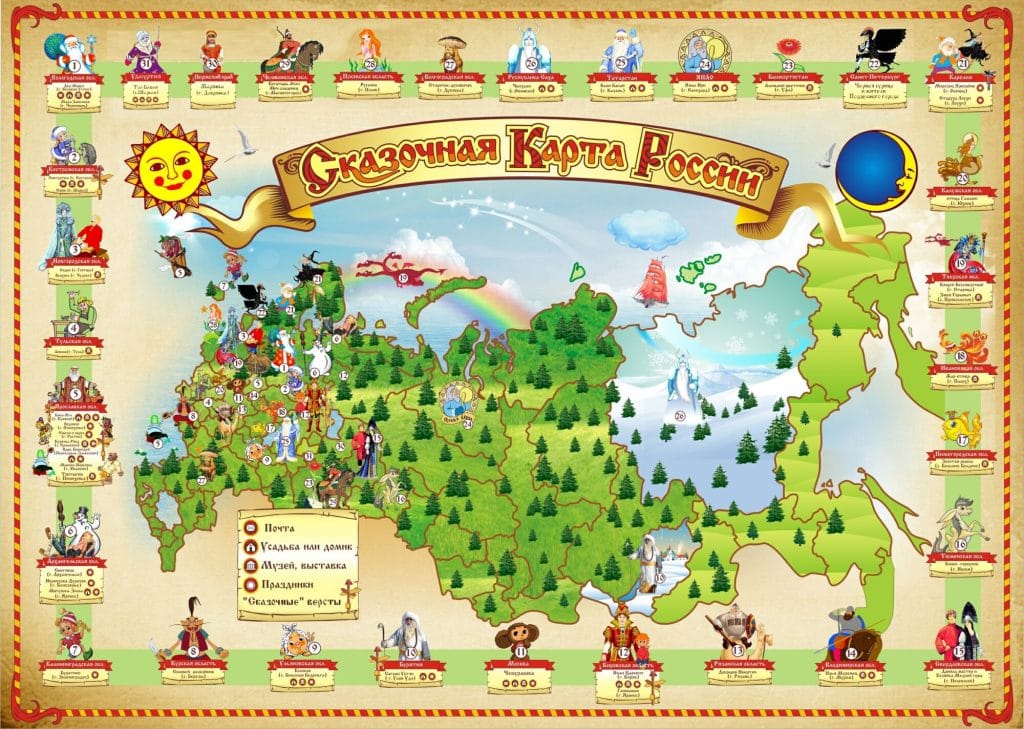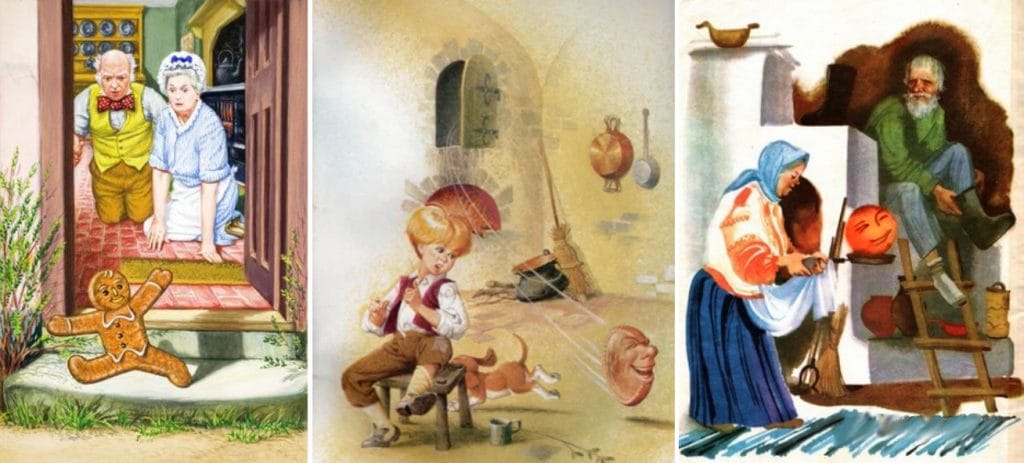We came across a popular post on social networks in which the author claims that “Dunno” was written in Ukrainian, the film “Chasing Two Hares” originally had a Ukrainian soundtrack, and “Kolobok” and “Ryaba the Hen” are Ukrainian folk tales. We decided to check each of these statements for accuracy.
Fast, published by user Leonid Shpak in 2020, at the time of publication it had collected almost 5,000 likes, more than 500 comments and 11,000 reposts. The author of the post writes: “Do you know that Dunno was written in Ukrainian? And then it was translated into the Moscow language and it became a classic of “Moscow communist literature.” And before that, the Ukrainian “Kolobok” and “Ryaba the Hen” became Moscow folk tales. Songs are a separate topic altogether)) P.S. The film “Chasing Two Hares” was first shot in Ukrainian.” In the post the author refers to users, who have borrowed information about “Dunno”, but in the case of fairy tales and films does not indicate sources.
"Dunno" was written in Ukrainian
Bohdan Chaly, former editor of a Ukrainian children's magazine "Periwinkle", said in one of interview about the history of the first publication of Dunno. “In November 1952, together with Valentin Bychko and Maxim Rylsky, we were delegated to Minsk to celebrate the 70th anniversary of the Belarusian writer Yakub Kolas. There we met Nikolai Nosov,” Chaly recalled. At the same time, Nosov admitted to his colleagues that, under the influence of Maria Prilezhaeva, who wrote many stories about the life of Lenin, it would be necessary to write a story about Lenin the child. But he wanted more to write a novel about the land of fairy shorts. Even the image of the main character was ready - Dunno. Nosov complained that it would be difficult to publish the story in Moscow, because it was not about an exemplary Soviet pioneer. Chaly liked Dunno’s idea so much that he invited Nosov to publish the first chapters of the work in his magazine.

Nosov started write “Dunno” in the Ukrainian Irpen, where he came to visit his parents after meeting Chaly. Upon returning to Moscow, where the writer lived most of his life, he continued his work. Having written the next chapter, Nosov sent it to “Periwinkle”, where the text translated from Russian into Ukrainian and published simultaneously in the Russian and Ukrainian language versions of the magazine. The first chapter of Dunno appeared in the February release 1953 under the title “The Adventures of Dunno and His Comrades” with the subtitle “fairy tale-story”. Thus, Nosov wrote “Dunno” in Russian, like all his other works. And the first edition of the fairy tale appeared in the Ukrainian literary magazine “Barvinok” in two languages at once: the original Russian and translated into Ukrainian.
Not true
“Kolobok” and “Hen Ryaba” - Ukrainian fairy tales
The idea that “Kolobok” and “Ryaba Hen” belong to Ukrainian folklore, and not Russian, was voiced in speech Ukrainian human rights activist Vladimir Bogaichuk in 2009. At a press conference, Bogaichuk said that Russians are stealing Ukrainian fairy tales and songs, and cited “Ryaba Hen” and “Kolobok” as examples: “There is a Russian folk tale, but there is no word “ripple” in the Russian language. It's "variegated" there. "Pestrushka Hen" should be. It’s the same with Kolobok. In Vladimir Dahl’s dictionary it is clearly written: “Kolo - Wed old and now southern western kolo, circle, rim, hoop; wheel, southern western worldly gathering, croup, clan, Cossack circle, council; in the southern Slavs round dance.” This means that the guy whose sides are round - a kolobok - should be called a “round boy,” Bogaichuk explained.
Two years later, the compilers of the “Fairytale Map of Ukraine” presented a complaint to the compilers of the atlas of fictional characters in Russia. The Ukrainian side accused their Russian colleagues of “stealing” fairy-tale characters - Kolobok and Chicken Ryaba. According to "Fairytale map of Russia", the birthplace of Kolobok is the Ulyanovsk region, but in Ukraine they believe that this is not so. Supporters of the theory of Kolobok’s Ukrainian origin argue that he could not have been born in Russia, since the Russian language does not have the word “kolo”, which in Ukrainian means “circle”, “wheel”.

In turn, the head of the Russian project Alexey Kozlovsky statedthat the name Kolobok comes from the word “kolobyatka”, which was used to call “the last bread from the kneading bowl”, that is, the remains of the dough - exactly what the grandfather and the old woman used to roll Kolobok. In the “Explanatory Dictionary of the Living Great Russian Language,” compiled by Dahl in 1819–1861, a definition of the Russian word is given "kolob": “M. kolobok, kolobok; rolled up ball, ball, pile, felt boot, katanets; a small, round loaf of bread.” An example of the use of the word is also given: “I'm a bun, swept over the bottom of the barrel, covered in raw butter, from a fairy tale." The synonym for the word “kolob” - “oscillator” - is marked with the abbreviation “symb.”, which indicated Simbirskoe origin of the word. It is worth noting that Dahl created a dictionary of the “Great Russian” language, that is, without pretending to cover Ukrainian and Belarusian material, although many words from these territories were included in the dictionary under the guise of “southern” and “western” dialect words. This is how the Ukrainian word entered the dictionary "kolo (southern west)", mentioned by Vladimir Bogaichuk, which, however, is unlikely to have an etymological connection with the Russian Kolobok.
As for the fairy tale “Ryaba Hen,” Bogaichuk’s argument that there was supposedly no word “pockmarked” in the Russian language can be easily refuted by looking at Dahl’s same explanatory dictionary. "Pockmarked" - a synonym for the word "motley". And Ozhegov’s dictionary leads example of use: “The pockmarked hen, the pockmarked hens in fairy tales: the pockmarked hen that laid the golden egg.”
Both tales - about Kolobok and Ryaba the Hen - can be found in collection “Russian Folk Tales”, compiled by folklorist and ethnographer Alexander Afanasyev in 1826–1871. IN notes Afanasyev to “Kolobok” it is indicated that a similar plot is found in the folklore of the Baltic, Scandinavian, Germanic peoples, as well as in the Uzbek and Tatar languages. There are 16 known Russian versions of the fairy tale, eight Ukrainian ones, and five Belarusian ones. Internationally index Aarne-Thompson - an index of plots of folk tales - the general plot is classified as "runaway pancake": the main character runs away from an old man, an old woman, a wolf, a bear, etc.” The American analogue of Kolobok is “The Gingerbread Man”, English – Johnny-Cake. And in Russian, Ukrainian and Belarusian - Kolobok.

IN notes Afanasyev to “Ryaba the Hen” it is indicated that in total he wrote down 11 Russian versions of the fairy tale, 11 Ukrainian and four Belarusian. In the Aarne-Thompson index also notedthat the plot of the “broken golden egg” is found in Slavic, Romanian, Lithuanian, Latvian and other Balkan and Baltic fairy tales.
Tales about Ryaba the Hen and Kolobok actually exist in Ukrainian folklore. But it is wrong to talk about exclusively Ukrainian or exclusively Russian authorship. And the assertions that the words “kolobok” and “ryaba” did not exist in the Russian language are easily refuted by explanatory dictionaries.
Half-truth
The film “Chasing Two Hares” was shot in Ukrainian
The film was shot in Soviet Film studios named after. Dovzhenko in Kyiv. The actors of the film really spoke Ukrainian with an admixture Kyiv Surzhik, according to the text of the play by Ukrainian playwright Mikhail Staritsky “For Two Hares”. How did it happen that millions of viewers watched this film in Russian? Then, in the 1960s, cinematographic and distribution activities were controlled by the State Committee of the USSR Council of Ministers for Cinematography, or Goskino. The film “Chasing Two Hares” Goskino appropriated a modest second category, which provided for rental only on the territory of the Ukrainian SSR. But the comedy film was so popular among viewers that soon the film was partially dubbed into Russian by the same actors and released into all-Union distribution.

Since then, the film has been shown exclusively with a Russian-language audio track. The original Ukrainian phonogram was considered lost for more than half a century, until it was accidentally discovered in 2013. discovered in the Mariupol Film Fund. In the autumn of the same year, a film with a Ukrainian-language soundtrack showed as part of the Molodist film festival in Kyiv. Now this version available on the Internet.
So, the film was indeed released with the original Ukrainian-language audio track, and was then translated into Russian for the wider Soviet public.
Is it true
Image: Ukrainian postage stamps, 2002. Source: WikiCommons
Read on the topic:
- Arzamas. Dictionary of Russian folklore terms
- "Moskovsky Komsomolets" Semi-eternal Dunno
- Studio "Filmstrip". "Kolobok»
If you find a spelling or grammatical error, please let us know by highlighting the error text and clicking Ctrl+Enter.






